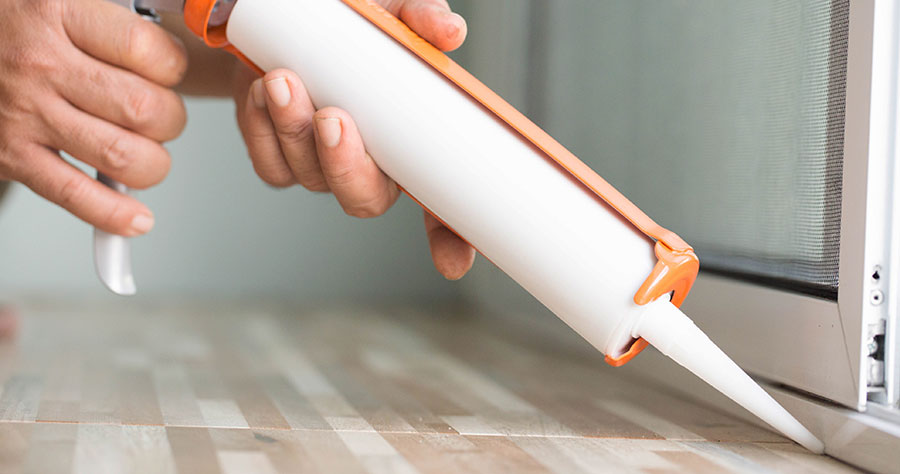Air leaks and cold drafts account for up to 25% of a home’s heat loss. If a detached home has air leaks and drafts, it’s like leaving a window open 5 cm for the entire winter.
Fortunately, caulking is a cheap solution.
Did you know?
Weatherizing reduces your home’s energy use. It not only blocks air leaks effectively, it prevents moisture from getting into insulation or the building envelope. Here are some practical tips on sealing the most common air leaks.
Important concepts about how to apply caulking
• Be sure to choose a good quality caulking compound well suited to the task. Cheap compounds are often difficult to apply and lack durability.
• Follow the instructions on the cartridge and check what you need for cleanup (water or special solvent).
• While you are caulking your doors and windows, take the opportunity to add or replace weather stripping and gaskets as necessary, to eliminate air leaks as much as possible.
• Remember that a building needs some fresh air coming in. If you think your house may have problems in that area, consult a heating system specialist.
• Lit candle or a thin sheet of paper (if necessary)
• Do your caulking in dry weather, preferably. Do not try to caulk in an area where the temperature is below 5°C (41°F). The compound will become stiff and difficult to work with.
• Purchase enough caulking. One standard-sized tube will make a bead 6 mm (1⁄4 in) wide and 7.6 m (25 ft) long.
Source : Hydro-Quebec

